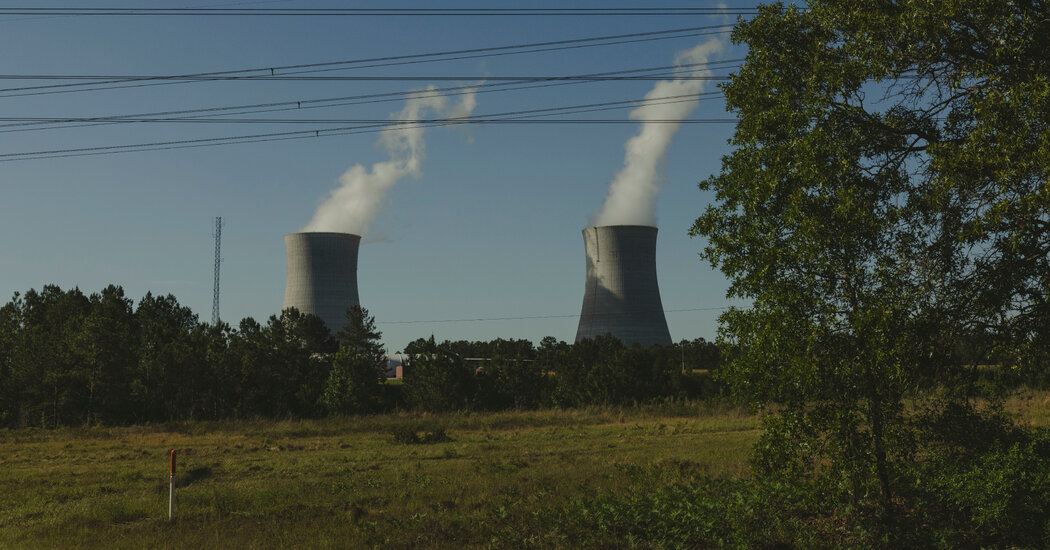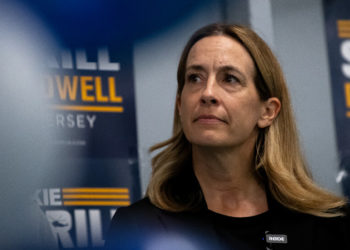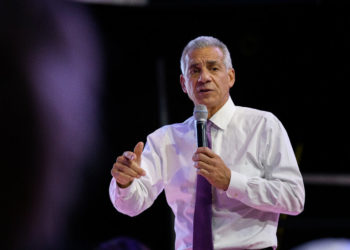The Trump administration on Tuesday announced a plan to build several new nuclear power plants in what it described as an $80 billion deal to use reactors developed by Westinghouse Electric Company.
It’s a big bet on an energy source that utilities and nuclear companies have struggled to develop in the United States over the last several decades, largely because of its high cost and long and complicated construction schedules. But the projected robust growth in electricity demand from data centers for artificial intelligence has encouraged politicians and energy and technology executives to take another look at nuclear power.
The new deal is a partnership between the federal government, Westinghouse, Brookfield Asset Management, and Cameco, a supplier of uranium fuel. Westinghouse is jointly owned by Brookfield and Cameco.
“This historic partnership with America’s leading nuclear company will help unleash President Trump’s grand vision to fully energize America and win the global A.I. race,” said the energy secretary, Chris Wright. “President Trump promised a renaissance of nuclear power, and now he is delivering.”
Under the administration’s plan, the new projects would use Westinghouse’s AP1000, a reactor most recently used in the United States at a power plant in Georgia. The two reactors built there were the first new ones the country has built in decades.
The AP1000 reactor was supposed to lead a nuclear renaissance in the early 2000s with plans for roughly two dozen new reactors across the country. But just two, at the Alvin W. Vogtle Electric Generating Plant in Waynesboro, Ga., near Augusta, made it to the finish line at a cost of about $35 billion — more than $20 billion more than initial estimates. The reactors were finished years later than planned.
Problems with the construction of those reactors were so severe that Westinghouse, then owned by the Japanese company Toshiba, filed for bankruptcy protection in 2017.
Various other projects failed, sometimes leaving utility customers on the hook for billions of dollars in costs.
This time, the nuclear plans have the backing of the wealthiest industry on the planet — the technology sector, which needs enormous amounts of energy to support its artificial intelligence ambitions. Nuclear power has also been embraced by some liberals and environmentalists on the grounds that reactors do not emit greenhouse gases unlike natural gas or coal.
In California, Gov. Gavin Newsom supported extending the life of the Diablo Canyon Power Plant — the last nuclear power plant in the state — and received aid from the Biden administration for it.
Big tech is also backing the development of small modular reactors; conducting research into fusion power; reopening shuttered plants; and extending the life of existing units.
Google on Monday entered into an agreement to buy power from a shuttered nuclear power plant in Iowa that its owner, NextEra, an energy company, plans to restart in 2029. Last year, Microsoft agreed to foot the bill to restart a reactor at Three Mile Island in Pennsylvania, the site of a cooling failure that led to the partial meltdown of a reactor in 1979.
Critics of nuclear projects contend that new reactors are expensive compared with renewable energy sources like solar and wind power. They questioned how the $80 billion would be used and who would fund it; the Trump administration and Westinghouse has provided few details about their plans.
“The $80 billion is intended to absorb the excess cost of nuclear,” said Mark Cooper, an economic analyst at the Institute for Energy and the Environment at the Vermont Law and Graduate School. “Westinghouse has to find a buyer. There are no buyers at the current price. They still don’t recognize that wind and solar are much cheaper.”
The United States leads the world in nuclear energy production and played a central role in the technology’s development. But in the last few decades it has fallen far behind China, which is building so many reactors that it is expected to have the largest nuclear power capacity by 2030.
Connor Teskey, president of Brookfield Asset Management, said in a statement that working with the federal government would “help unlock the potential that Westinghouse and nuclear energy can play to accelerate the growth of artificial intelligence in the United States, while meeting growing electricity demand and energy security needs at scale.”
Many of the reactors China has built in recent years are a version of Westinghouse’s AP1000. That country plans to add dozens of reactors, which would bring it closer to the total number of reactors in the U.S. nuclear power plant fleet of more than 90.
Other countries have also been pushing for more nuclear power plants.
On Tuesday, Japan’s trade ministry unveiled a list of domestic companies interested in starting projects as part of the $550 billion investment fund Japan agreed to establish with the United States. The projects included artificial intelligence and a nuclear reactor-construction initiative that was expected to be worth up to $100 billion and involve Mitsubishi Heavy and Toshiba.
River Akira Davis contributed reporting.
Ivan Penn is a reporter based in Los Angeles and covers the energy industry. His work has included reporting on clean energy, failures in the electric grid and the economics of utility services.
The post Trump Administration Backs Plan for New Nuclear Plants appeared first on New York Times.




